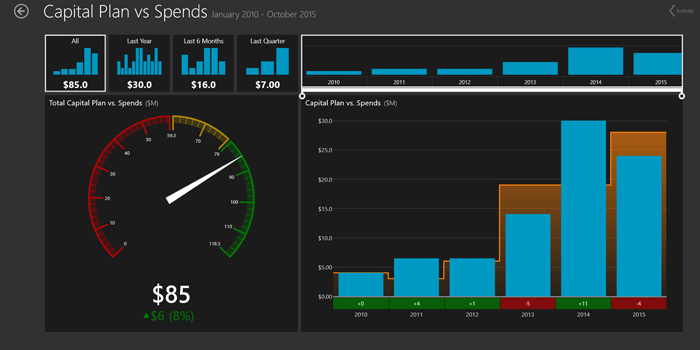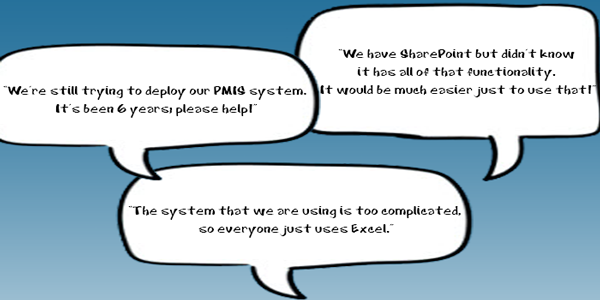How bots and machine learning could impact construction project management
Bots are a hot topic right now. Tech giants from Google, Facebook and Microsoft and automakers like Toyota are betting big on bots as a critical cutting-edge technology. And they aren’t alone. Thought leaders and entrepreneurs in virtually every industry and sector are exploring bot technology.
If you haven’t been following the hype, a bot is an application of artificial intelligence. Basically, it is a computer program that fetches and analyzes data. Some of these bots use machine learning to spot patterns or understand how humans perform tasks and then mimic – and enhance – that behavior.
We’re already starting to see some of these bots popping up for ordering food, booking flights, or as general personal digital assistants. Most of us see these innovations and say “wow, that’s pretty cool” and move on. But, this is a much bigger transformative technology that is evolving that will reinvent the workplace and re-define the way people work – for better or worse.
Let’s have some fun thinking about the possibilities bot technology could create for business in general and construction project management in particular.
Why I’m All in On The Bot Bandwagon
Here’s why: we’re all being asked to do more with less to stay competitive in business today. At the same time, we must keep quality high. I believe bots and machine learning will help all of us be more agile, efficient and consistent.
Businesses have transitioned to the internet and for that matter the “cloud.” So all of your data to manage and operate a business is created and transacted online. Now imagine if we could apply bot technology to the various aspects of our business – finance, accounting, manufacturing, management, etc. – and program the bots to learn from our best practices. They could use machine learning to understand how we work, analyze problems, make decisions, and ultimately get things done. So in a way they would become an extension of you – allowing everyone in your company to do more with an army of virtual assistants.
Take it a step further. What if you could buy bots that had “learned” from the masters like Warren Buffet for financial investing, or Bill Gates for technology leadership, and so on. Now your company is drawing on the best of the best in the industry.
Construction Project Management Bots
Now let’s apply this to construction. Bots could transform the way we manage projects. As everyone knows, there are way too many data points to consider when managing a construction project. There is not enough time in the day or resources to monitor all of them and their interrelationships.
But what if you were able to set up bots that could analyze all of your project data to spot patterns, find anomalies and make correlations. The bots could crunch mountains of data for you, aiding in your decision making and even taking corrective action.
For example, say you have a project risk that is added to your risk register. That risk could have an impact to your schedule, cost forecast, contingency, scope, change management, and ultimately team communication.
What if a bot could perform multiple scenarios in real time and suggest the best mitigation plan based on your company’s priorities and best practices? Bots could do all of the detailed analysis across scope, schedule, and budget and surface that information into a mobile device while you walked to over to the planning meeting.
Or consider scheduling. So many factors go into keeping your projects on time and on budget. Imagine if your team was assisted by a scheduling bot that was trained to understand scheduling concepts like schedule crashing and critical path. The bot could generate actionable reports, perform TIAs and make recommendations. You and your team could then make better, more informed decisions based the most accurate data analysis possible.
This all sounds great, but how do we get there?
I hope your mind is racing with some of the questions that will have to be answered like:
- How could bots be assimilated into a PMIS to collect all of your data and analyze it?
- What would the new role of a project team be? Will the focus change from reporting and analysis to data collection and decision-making?
- Can you teach a bot to learn all of the work experiences one would encounter?
- How will bots and people work together in the workplace of the future? Are there qualitative synergies that only occur when humans analyze data together?
- What is the role of the PM? Will they perform a QA/QC to the bot or act as a tie breaker?
- Who does a PM blame when a bad decision is made?
Let me know your thoughts
I believe we all have much to gain in a future where bots are helping accelerate tedious or time-consuming business tasks. But there is understandably a lot of debate about the pros and cons of AI technology. Some fear the dystopian implications of machines becoming too intelligent or self-aware (the singularity).
What do you think? I’d welcome hearing your thoughts in the comments below.





